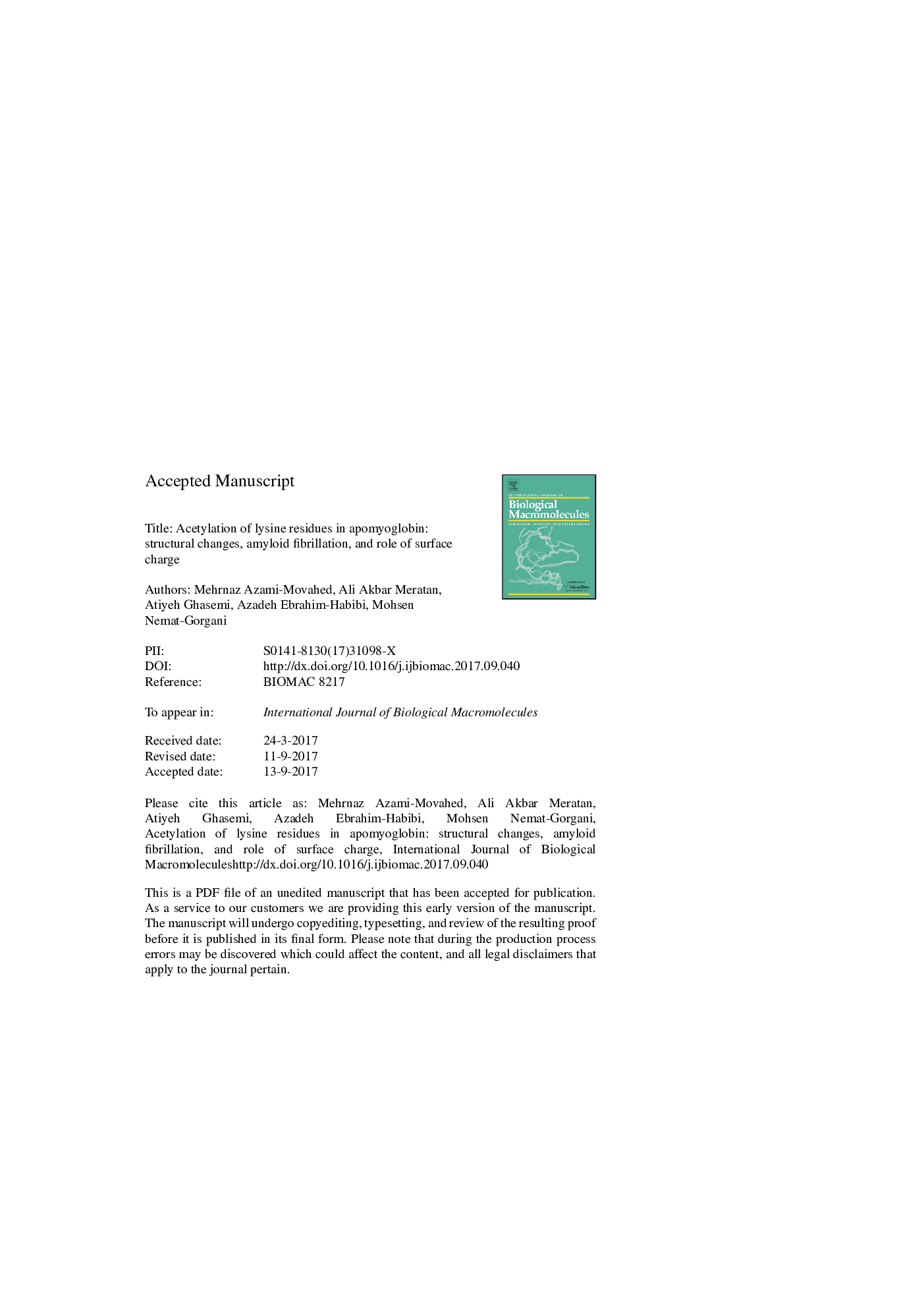| Article ID | Journal | Published Year | Pages | File Type |
|---|---|---|---|---|
| 8329103 | International Journal of Biological Macromolecules | 2018 | 36 Pages |
Abstract
Post-translational modifications play important roles in conformational properties and aggregation propensities of different peptides and proteins. In the present study, we have investigated the effects of acetylation of lysine residues on the structure and aggregation properties of apomyoglobin (apoMb).All of the 19 lysine residues were modified. Far-, near-UV CD, intrinsic and acrylamide quenching fluorescence studies indicated that acetylation significantly influences conformation of apoMb by altering both its secondary and tertiary structures. A considerable decrease in ANS fluorescence intensity was observed, which also suggested disruption of the heme pocket. Dynamic light scattering indicated partial compaction of protein structure as a consequence of the shielding effect of acetylation. While the presence of well-defined mature fibrils was detected in solutions of native apoMb, acetylation promoted formation of non-toxic amorphous aggregates, with low β-sheets content and decreased affinity for Thioflavin T, an amyloid-specific dye. Results are discussed in terms of the role of surface charge in conformational alterations of proteins and how small changes in ionic networks may affect aggregation pathways and morphology of the resulting aggregates. The physiological significance of the modification process in controlling cytotoxicity of the aggregated species is also discussed.
Related Topics
Life Sciences
Biochemistry, Genetics and Molecular Biology
Biochemistry
Authors
Mehrnaz Azami-Movahed, Ali Akbar Meratan, Atiyeh Ghasemi, Azadeh Ebrahim-Habibi, Mohsen Nemat-Gorgani,
